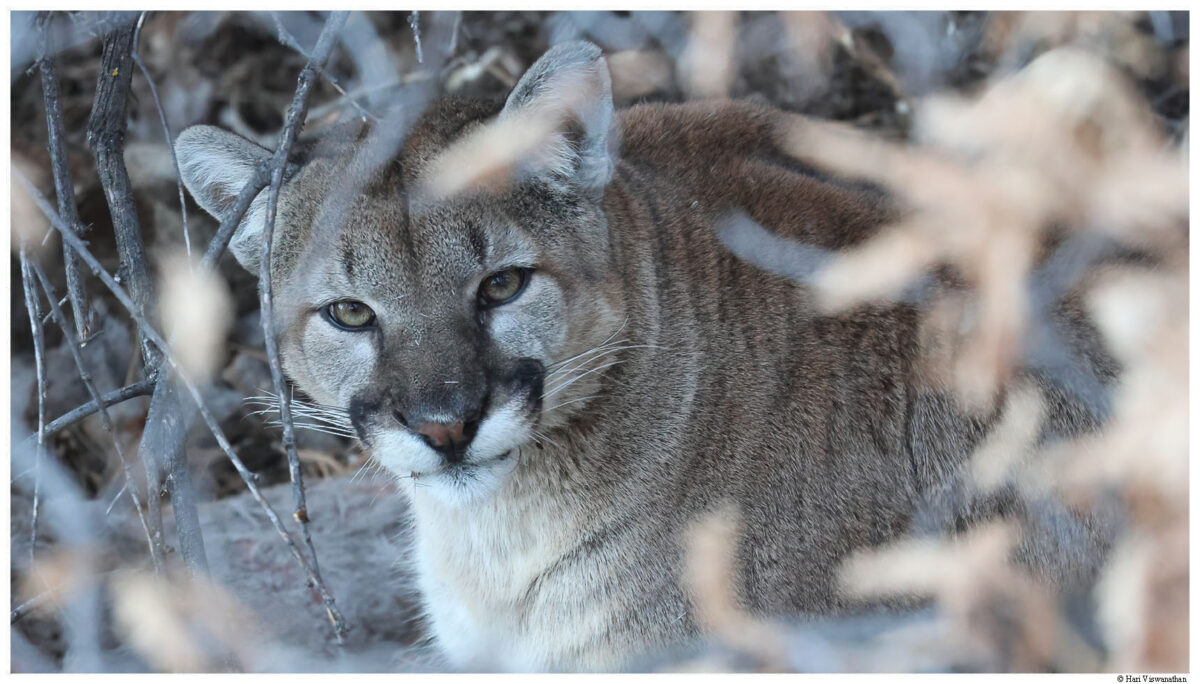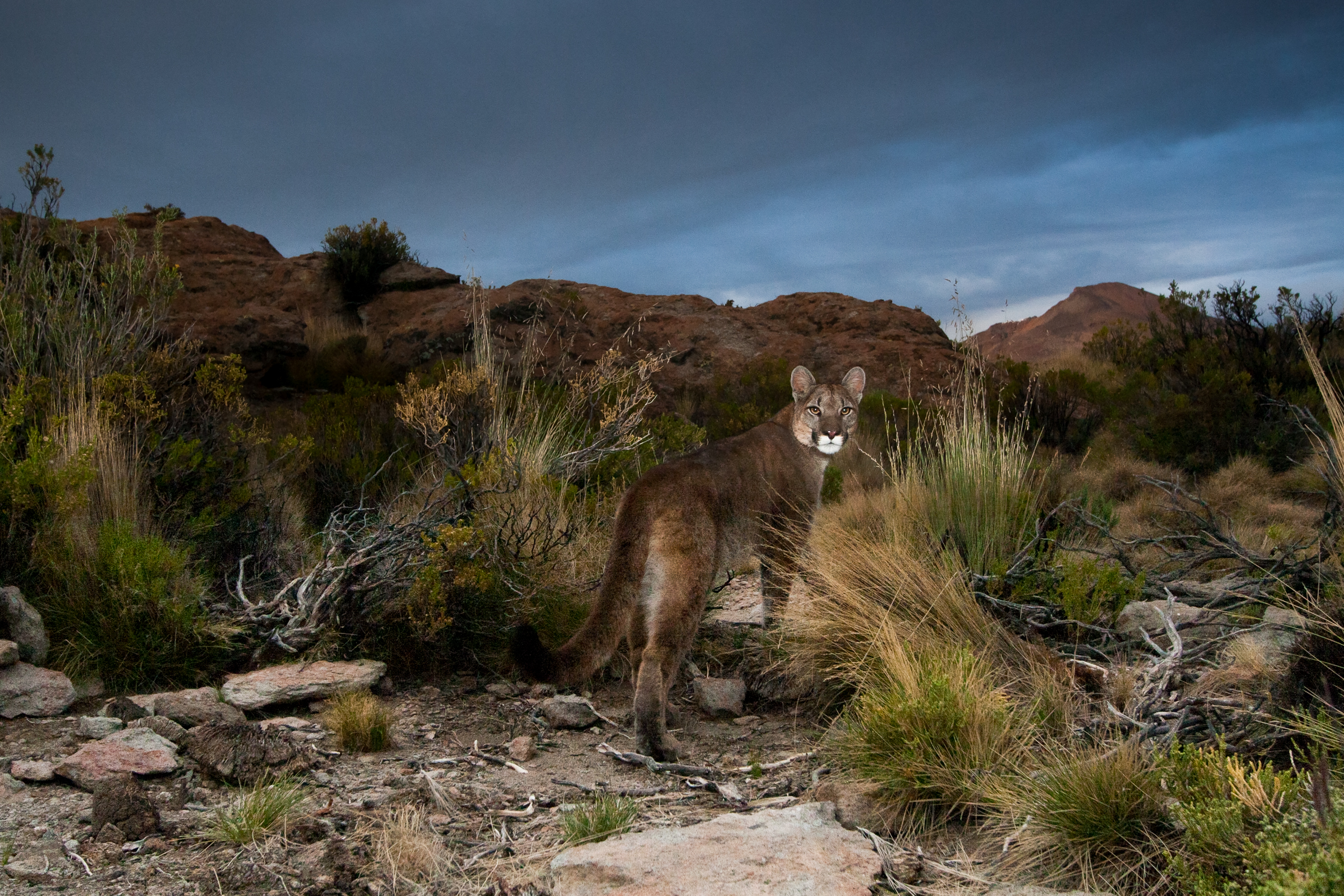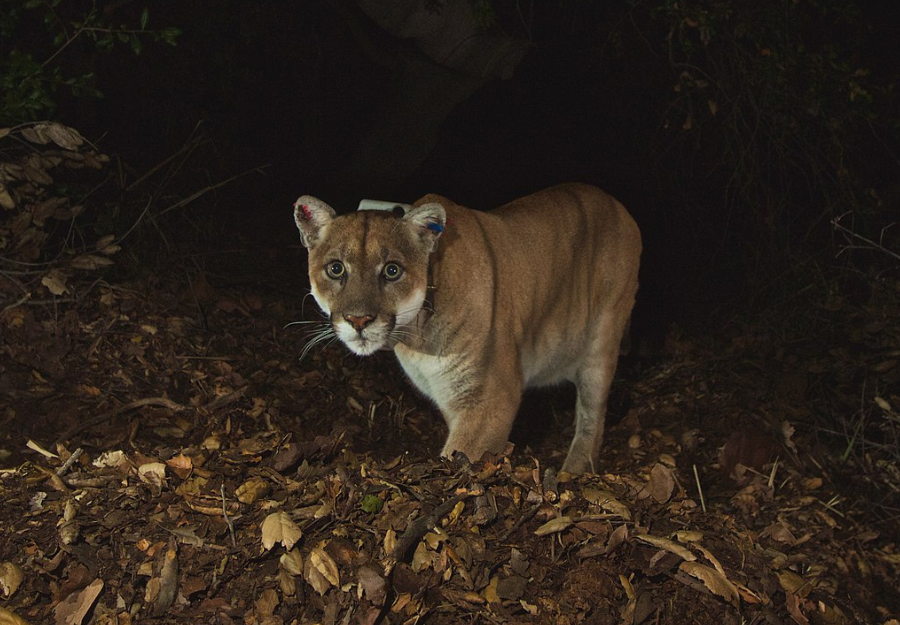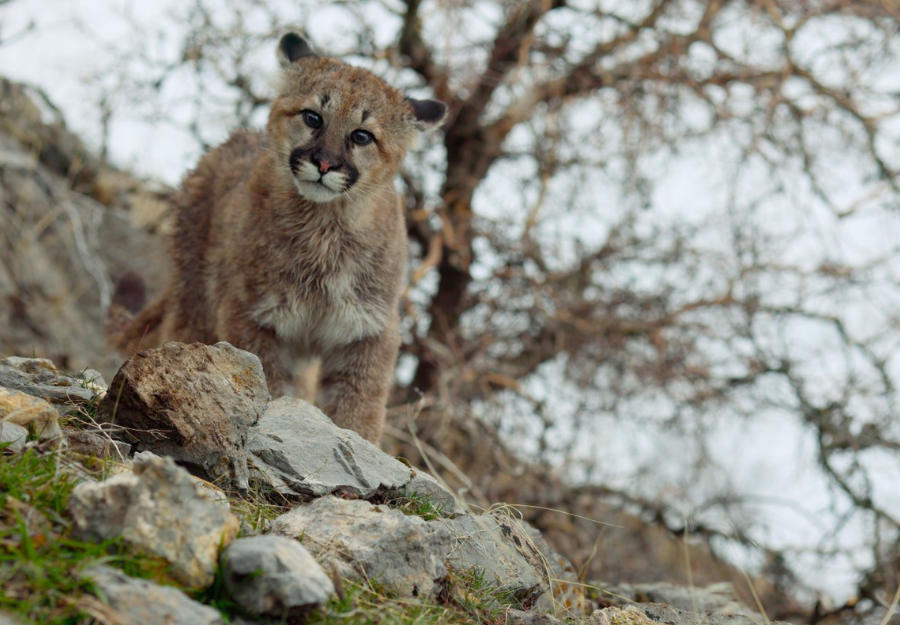Cougar sighted in western Eden Prairie
By Lyn Jerde
An Eden Prairie city employee’s reported sighting of a cougar last week on the city’s west side prompted Minnesota Department of Natural Resources officials to track the animal to a likely lair in Chanhassen.
Confirmed cougar sightings in Minnesota are extremely rare, according to the DNR.
And, while the large felines generally fear and avoid humans, caution is warranted, said Jim LaBarre, the DNR’s assistant area wildlife manager for the north metro area.
“There aren’t too many larger mammals that go after pets, in the metro area, though we have this situation in the north,” he said. “We recommend that people always keep control of their pets, and keep an eye on them when they’re out.”
Pat Brink, the city’s communication coordinator, said the city employee saw what looked like a cougar March 23 on the western edge of Eden Prairie.
Brink said DNR officials investigated the report, and found the carcass of a deer (a cougar’s preferred prey) and cougar tracks – but no sign of the cougar – in an abandoned Chanhassen building about a mile from Eden Prairie’s city limits.
Similar reports of cougar sightings, Brink said, have recently come from Minnetonka, Shorewood and Chanhassen.
“The cities and the DNR are coordinating their efforts to determine a territory that the animal may inhabit,” Brink said.
According to the DNR, the cougar (Felis concolor) is common in the western United States, but is extremely rare in Minnesota.
Cougars in Minnesota might be escaped or released pets (people may legally buy them from game farms and keep them as pets), or they wandered eastward from mountainous western states.
An article on the DNR’s Web site (http://www.dnr.state.mn.us) noted that the department gets about 50 reports of cougar sightings each year – but most of the sightings turn out to be “large house cats, or even yellow Labrador dogs.”
Conrad Christianson, a DNR furbearer specialist, said, “We can’t rely on every telephone call that comes in. A lot of people think they’ve seen a cougar, but it turned out to be a St. Bernard dog.”
At six to nine feet long and between 100 and 200 pounds, a full-grown cougar is larger than most dogs.
The cougar’s color is typically tawny (tan to tan-orange), and its characteristic feature is a long, curling, rope-like tail.
Cougars eat prey ranging from rabbits to deer, and have been known to attack and injure horses.
Christianson said a cougar living in or near the suburbs would circulate in terrain that offers an abundance of food – especially deer, but also turkeys, rabbits and other animals.
Although there has been no reported case of a cougar attacking humans in Minnesota, Christianson said, such attacks have happened in the western United States, as people move to land that was formerly cougar habitat.
Anyone who sees a cougar, Christianson said, should respond as follows:
• Don’t turn your back on the animal.
• Back away slowly.
• Try to make yourself appear “large and loud.”
In any case, he said, cougars are a protected species, and the DNR will not trap and relocate them.
And, it’s up to local police departments to protect citizens against threatening animals (including vicious house pets, which are far more likely to threaten suburban people than cougars), Christianson said.
Anyone who spots what might be a cougar is asked to contact their local police or animal control officer. In Eden Prairie, the animal control officer can be reached at 911, or at the non-emergency Eden Prairie Police Department number, 952-949-6200.
Previous suburban cougar sightings
The following confirmed sightings of cougars have taken place in the Twin Cities metropolitan area:
• July 1996 – The image of a cougar was captured on videotape from a security camera in the Maple Grove and Plymouth area.
• April 2002 – Pictures taken by motion-sensitive cameras captured images, over a three-day period of an adult cougar at a deer kill in the Minnesota River Valley near Savage.
• May 2002 – Bloomington police shot and killed a 103-pound female cougar, which stood her ground about 30 feet from a walking path in Moir and Central parks. DNR Furbearer Specialist Conrad Christianson said he is almost certain this was the same cougar as the one spotted near Savage.
Sources: Eastern Cougar Network Inc., www.easterncougarnet.org.
Seen big pawprints? Here’s how to tell if it might be a cougar
DNR Furbearer Specialist Conrad Christianson said cougars leave pawprints that are about four inches in diameter – but so do many large breeds of dogs, and wolves.
To distinguish between tracks from canine or feline species, Christianson recommends checking the Web site www.bear-tracker.com, then clicking on “Canine vs. Feline.”
Some differences include:
• Canine tracks usually have claw marks. Feline tracks do not, unless the animal is running or pouncing.
• Canine tracks don’t have a third lobe on the hind edge of the heel pad. In a feline track, the hind edge of the heel has three aligned lobes.
• In a canine track, the two front toes are lined up side by side. Feline tracks show one toe further ahead than the other, similar to an index finger in humans.



 Facebook
Facebook Twitter
Twitter Send Email
Send Email


